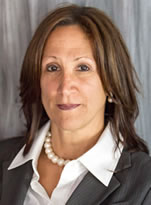articles
Standards Of Care and Utility For New Personal Training Directors
Originally published on http://www.ideafit.com/fitness-expert/laura miele-pascoe-phd, 16, 2015
Email: Dr. Miele
Telephone: 347-400-0750
View Profile on Experts.com.
Operations: Familiarize Yourself and Your Staff with Key Components of Safe Practices
New managers aren't always accustomed to looking at the big picture. They may know a lot about the fitness industry, and even a lot about business, but there are core issues relevant to running a personal training department or studio that must be solidly understood. Even veteran directors can benefit from taking a step back and reviewing the basics. This article discusses the main areas of safe practice that managers must address in order to create a sound environment for their facility's members, clients and staff - and to protect their business.
Credentials and Emergencies
It's well known that fitness professionals must possess a personal training certification and/or an exercise science degree, as well as CPR/AED certification and insurance. These are all minimum requirements. However, having these credentials does not necessarily prevent trainers from making poor decisions or selecting inappropriate exercises. Thus, it's critical that all staff know how to assess and handle emergency situations. Review your standard operating procedures with your staff to ensure that
- employees are properly trained in both cardiopulmonary resuscitation and the use of an automated external defibrillator
- staff know where the facility's AED is located and how to access it in an emergency;
- personal trainers know what their role is and what is expected of them if a client is injured--they should be prepared to react to an injury properly;
- all staff members know how to file an incident report and fully grasp the importance of documenting extenuating circumstances (every time), no matter how insignificant they seem; and
- you have created an emergency action plan and shared it--this may save someone's life.
Accurate Recordkeeping
Being a fitness trainer involves insight and foresight: insight to understand what should be done and when, and foresight to understand the potential dangers of certain activities. We've already mentioned the importance of documentation. Require that all trainers keep a written record of their clients' programs, as well as each client's progress, with pertinent notes, including the rationale for various decisions the trainers have made. This achieves three things:
- Trainers and clients can see how close they are to reaching predetermined goals.
- Proper note-taking may reveal "holes" in the program; trainers can then make revisions in order to get the exercise selection back on track. Trainers must understand their clients' abilities, as well as when to keep clients on their current exercise program and when to progress them into more advanced movements and/ or exercises.
- A hard-copy review helps lessen the incidence of injury. For example, a written note about seeing a biomechanical weakness in a client can help the trainer remember to avoid certain moves until the movement pattern is corrected.
Coach your personal training staff to adhere to basic principles, including proper supervision, monitoring and spotting. These precepts empower clients to better understand their own strengths and weaknesses. Also, educate trainers about the importance of proper progression. Allowing clients to progress too quickly may increase their risk of injury due to fatigue or unfamiliarity with the movement.
Professionalism
Some personal trainers become complacent or over-comfortable while training clients whom they see on a regular basis. Staff members need to understand the importance of maintaining a professional image. Remind employees that the main objective is to ensure safety while helping clients reach the goals that were established during their initial consultation. Discourage trainers from any and all of these:
- answering the phone while training clients
- texting
- walking away while clients are executing an exercise
- failing to use equipment safety features
- forgetting to spot clients if required
Our society is a litigious one. If you don't know the industry standards and guidelines or you don't follow them properly, your facility is an open target. Make sure all your employees are well trained. Know what must be done to keep your clients and your business safe. Education alone does not make you a professional. Experience, constant continued education and insight are required.
Reference
* ACSM (American College of Sports Medicine). 2012. ACSM's Health/Fitness Facility Standards and Guidelines (4th ed.). Champaign, IL: Human Kinetics. (https://cmc.marmot.org/ Record/.b35340150)
* IDEA Fitness Manager (/idea-fitness-manager), Volume 28, Issue 1
Laura Miele, PhD, CST-2, is a Sport, Fitness, and Education Expert with over 30 years of experience in various aspects of sport, fitness, and physical activity including the education, training, and supervision of athletes. Dr. Miele is a Nationally Certified Accredited Interscholastic Coach through the National Federation of State High School Association NFHS) and has 14 years of physical education experience, (Pre-kindergarten-12) within multiple states across the country.
©Copyright - All Rights Reserved - Republished with author's permission.
DO NOT REPRODUCE WITHOUT WRITTEN PERMISSION BY AUTHOR.
Related articles
Follow us








